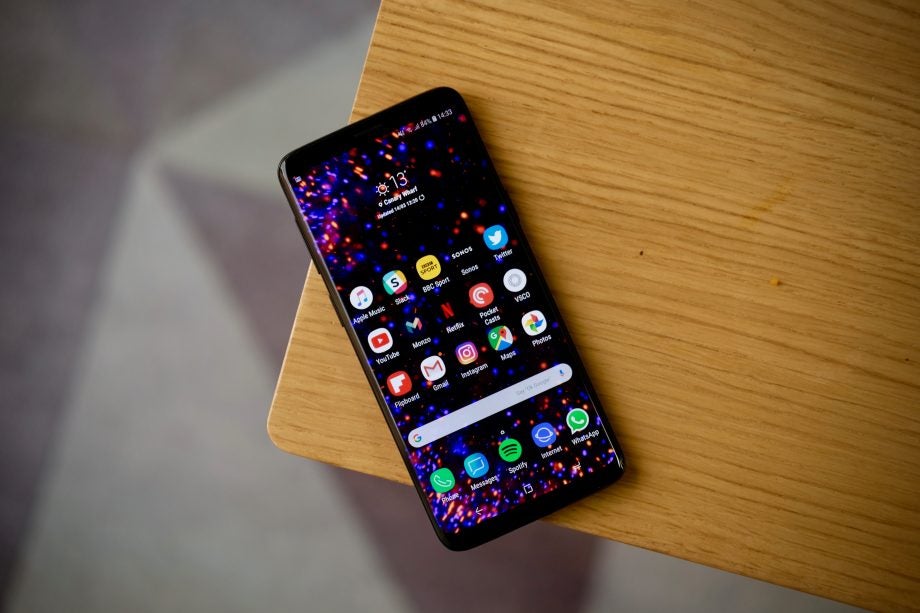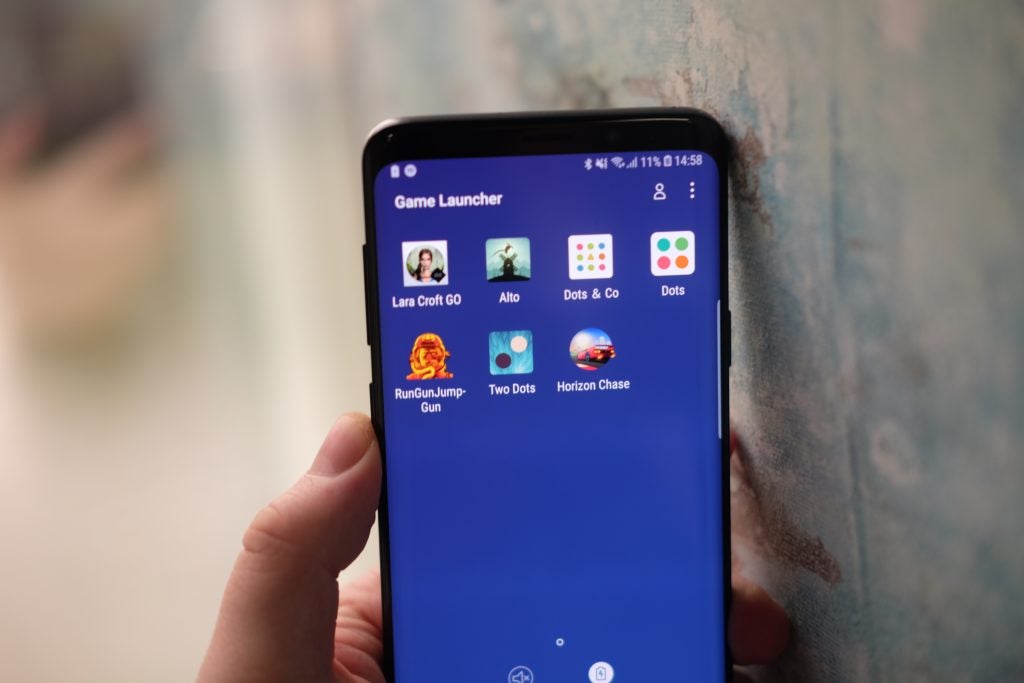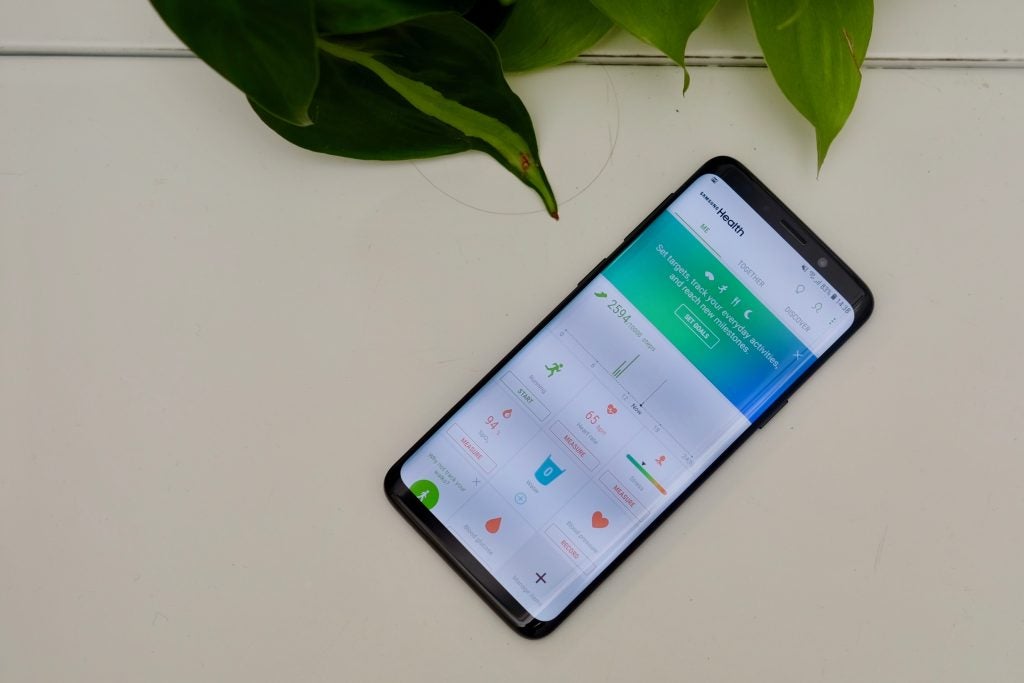Samsung Galaxy S9 Review - Performance and Software Review
Performance and Software Review
Rating the Samsung Galaxy S9 for its performance and software

Sections
- Page 1 Samsung Galaxy S9 Review
- Page 2 Performance and Software Review
- Page 3 Camera Review
- Page 4 Battery Life and Verdict Review
Samsung Galaxy S9 – Performance
The Samsung Galaxy S9 is a very fast phone, churning through everything I could throw at it with minimal fuss. For a phone that costs £739/$739 this shouldn’t be a surprise, and you’ll find phones that feel just a fast for a lot less money.
At the phone’s heart is either a Snapdragon 845 or Exynos 9810 (which will change depending on your region; us Brits will get the latter and that’s the version I’ve been using for this review) but, whichever version you get, expect them to function similarly. Aside from the typical speed-boosts to the GPU and CPU, the new SoCs can handle new features such as improved facial recognition and the 960fps slow-motion video recording.
Related: Samsung S9
Accompanying the chip is 4GB of RAM – 2GB RAM less than the S9 Plus variant. It’s odd that Samsung isn’t keeping parity between the devices, but don’t let this tempt you into splashing out on the bigger model. I didn’t notice any real difference in RAM-heavy areas; my only issue would be how it holds up after a few months of use.
In terms of benchmarks in our usual test apps, there’s a bump over the Snapdragon 835/Exynos 8890, but the Galaxy S9 can’t match the iPhone 8 or iPhone X for numbers. See the benchmark table below for the full scores.
| Single-Core | Multi-Core | AnTuTu 7 | |
| Galaxy S9 | 3690 | 8757 | 251,205 |
| Pixel 2 | 1917 | 6312 | 184,336 |
| iPhone X | 4257 | 10364 | 235,607 |
| Galaxy S8 | 2013 | 6659 | 174,439 |
Benchmarks are handy for providing a general overview of performance, but I’m more concerned about real-world usage. I didn’t notice a huge difference between the Galaxy S9 and S8, with apps opening quickly and games playing without lag or dropped frames. Even Google Play titles I’d consider as being power-intensive – Asphalt 8, Hitman Sniper – run perfectly. There’s so much power available here that it would be good to see app devs make more use of it.
Things don’t run perfectly all of the time, however. Like I mentioned in the Samsung Galaxy S9 Plus review, there are certain areas where lag is common and highly irritating. Bixby, for example, judders when you swipe to its homescreen and some of Samsung’s own apps feel sluggish.
A big complaint levelled at Samsung phones in previous years has been their poor speakers. The down-firing mono speaker that sat along the bottom edge of the Galaxy S8 was awful – thankfully, it’s a better story here.

The speaker at the bottom remains, but there’s now one at the top too. The audio has been tuned by AKG and supports a form of Dolby Atmos. Atmos is a technology that’s normally employed in a room with supported speakers positioned above you, offering an immersive experience when you’re watching a film.
On the Galaxy S9 it’s more a software boost, a button you press to simulate a 360-degree sound, rather than actually supporting Atmos content. It sounds okay and there’s a volume-boost when you enable the mode from the quick-settings bar, but it feels very artificial.
The sound can still distort at high volumes, plus it sounds better when playing videos than it does for music – but I will take it.
Call quality is fantastic and comfortably better than the iPhone X, with strong signal both on 4G and Wi-Fi. There’s also support for 1Gbps LTE download speeds (where available) and Bluetooth 5, and storage starts at 64GB – although this can be increased through a microSD card.
Samsung Galaxy S9 – Software
In the same way that little has changed in the way the Galaxy S9 works over its predecessor, the same is true when of Samsung’s software too. It’s still slickly designed, offering attractive icons and fluid movement between your app drawer and notifications panel, but it’s very different to the way Google envisions Android.
Duplicate apps are a big problem: there are two browsers, galleries, email clients and app stores. Of those I’d say it’s only the browser that’s better than the Google alternative – it’s surprisingly fantastic thanks to extension support and a night reading mode.

You can disable and hide some of these apps, but very few can be completely removed from the device. The same can be said of Samsung’s virtual assistant, Bixby; it can be switched off, but the button that launches it can’t be remapped to another function.
Bixby wasn’t particularly impressive when it launched with the Galaxy S8 and very little has changed here. There’s now voice support for asking basic questions, but try anything remotely taxing and Bixby will fail. Even basic questions such as ‘What’s the weather like today?’ are often met with no response. Samsung teased the launch of Bixby 2.0 later in the year, so hopefully things will improve.
However, where Samsung’s software does impress is in the customisation options available. I like being able to tweak performance and the resolution of the display (which is 1080p by default) to stretch the battery further, and having proper control over the screen calibration is fantastic. Samsung’s general battery-saver modes are also some of the best on any phone.
There are plenty of security options, too. There’s the ability to have duplicate messaging apps if you use the phone for work, and a great Secure Folder for private files. These kind of features just don’t exist in vanilla Android.
Samsung’s Health app remains too, and there’s still a handy heart-rate sensor on the back. I tested the HRM against an Apple Watch and a Fitbit, and while the results weren’t quite as accurate as those dedicated bands, they weren’t far off. You can also log the food you eat through the Health app – I took a picture of a Reuben sandwich, which it correctly identified – and your blood oxygen levels too.
Instead of going all-in on facial recognition as Apple has done, the Galaxy S9 sticks to iris and facial-scanning alongside the fingerprint scanner. They work well, but they don’t feel as polished as Apple’s effort. I often encountered a judder as the lockscreen scanned my face; a bright red beam shines out in a distracting way. A new ‘Intelligent Scan’ feature combines facial and iris scanning together, and will defer to you face if it can’t match your iris.


